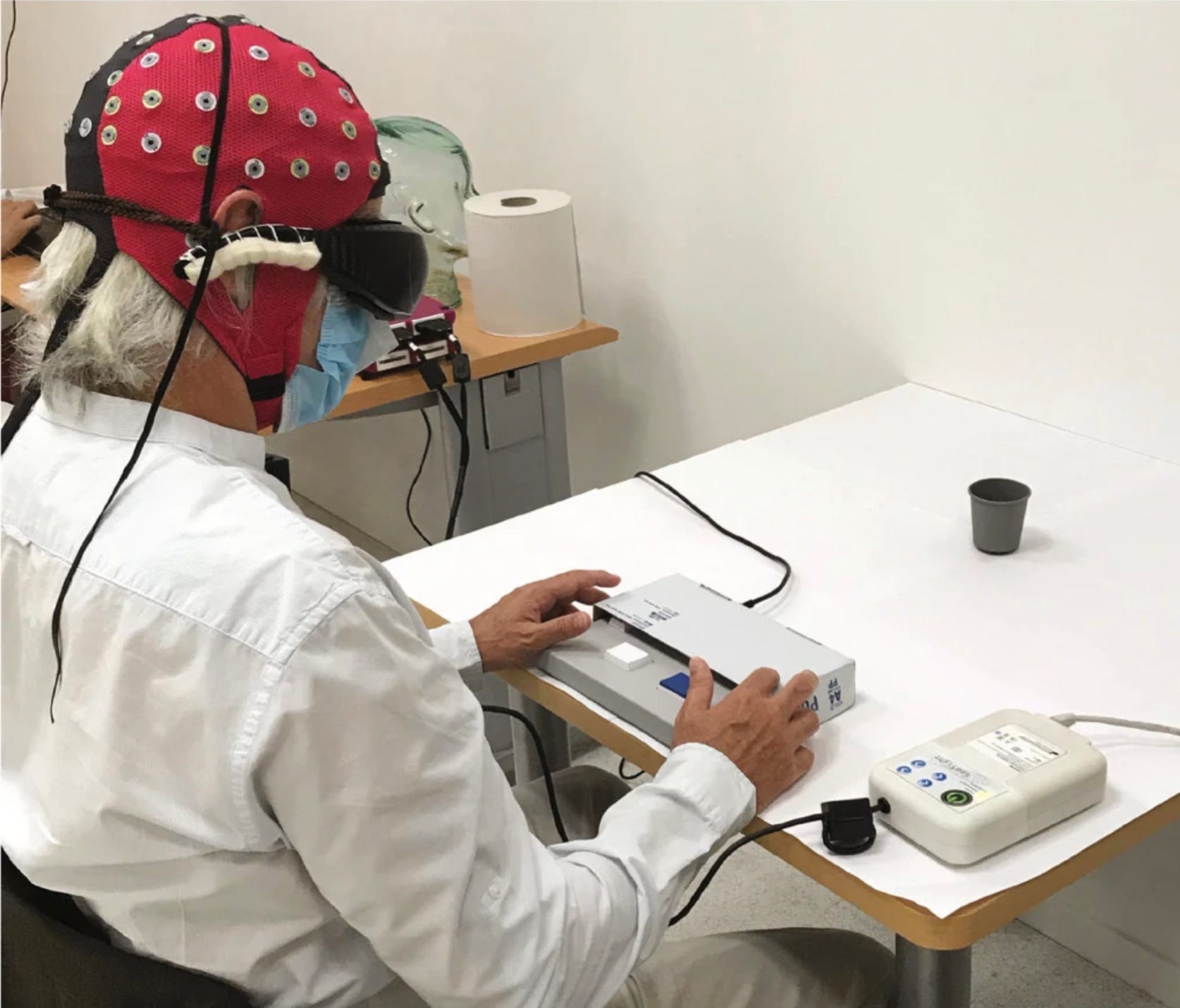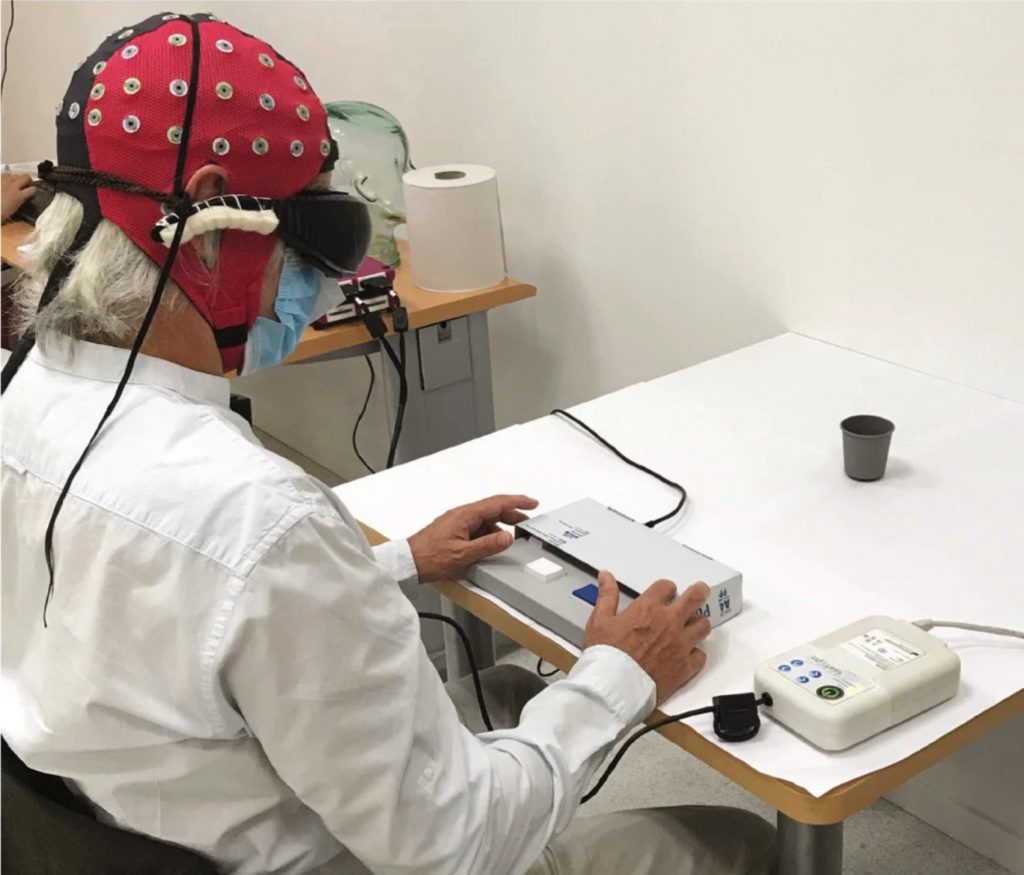
Sahel, et al; Nature Medicine
- Scientists used a technique called optogenetics to help a blind man see.
- The treatment combined gene therapy with light-sensing cells and special goggles.
- The first successful use of the treatment let one man perceive blurry objects with the goggles on.
- See more stories on Insider's business page.
After 13 years of work, a team of scientists have reached a major milestone in treating genetic blindness.
The scientists used a cutting-edge technique to build light-catching proteins in a single eyeball, allowing one 58-year-old man to perceive some objects using special goggles. He could see blurry outlines in a narrow field of view, which qualifies as partially restoring vision.
The results – the first successful use of a new treatment – were published in Nature Medicine Monday.
Although the team is a long way off from restoring full vision to those with inherited blindness, this small success shows promise for more effective treatments in the future.
"It's obviously not the end of the road, but it's a major milestone," José-Alain Sahel, an ophthalmologist who worked on the study, told the New York Times.
The treatment combined gene therapy with futuristic goggles
The procedure builds on a gene therapy technique called optogenetics, which was previously used to explore the inner workings of the brain.
Scientists have previously injected animals with viruses programmed to change normal cells into photoreceptors, or cells that respond to light.
Sahel's team was the first to try this technique as a way to cure blindness. They had to make sure enough light reached the eye to activate those optogenetic proteins, without amplifying the light so much it would damage the delicate retina.
To achieve this, they chose to work with amber light, which is relatively easy on the eyes. They used gene therapy to create proteins that only pick up that type of light, then invented goggles that can translate the world into pulses of amber light.
The procedure restored partial, blurry vision for one participant
With the goggles on, one volunteer was able to see the stripes of a crosswalk, reach for a notebook sitting on a table, and count the number of cups set in front of him. His perception of objects was blurry and limited to a narrow field of view.
The team also injected several other volunteers with the gene-bearing viruses with the intention of training them to use the goggles, but the project was put on pause due to the pandemic.
After one volunteer tried the goggles on his own for seven months, he started to see results. Once lockdown ended in France, he was able to go into the lab, where scientists confirmed that the goggles activated the visual cortex of his brain.
The team plans to bring the other volunteers in for training soon, Sahel told the Times. For now, they have proof of concept on their side.

